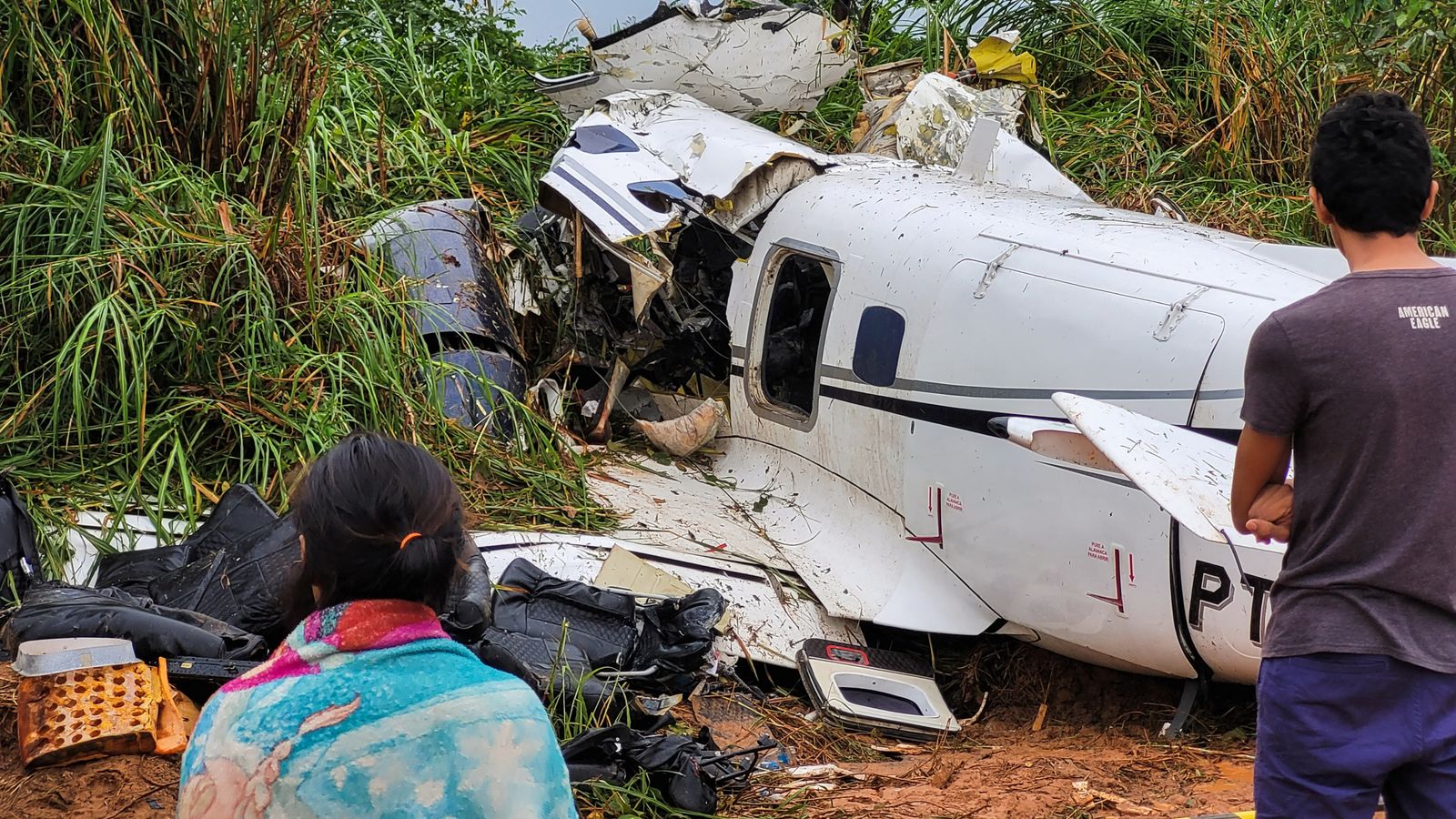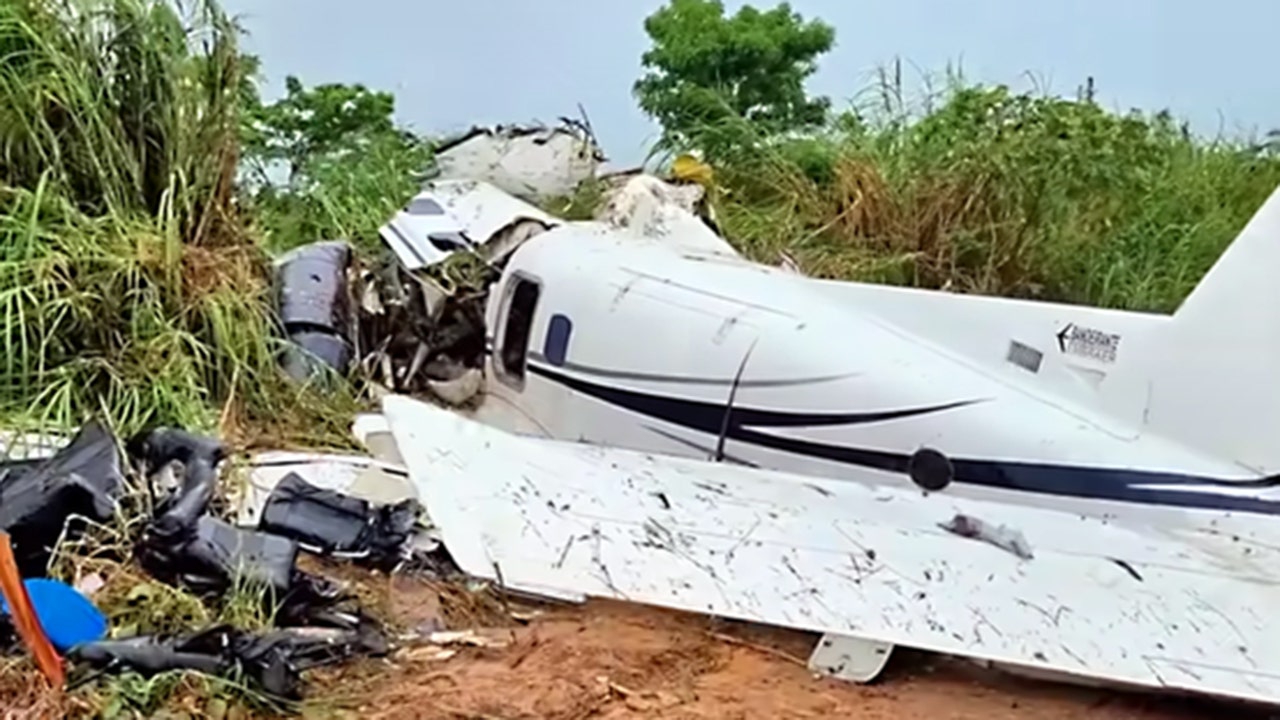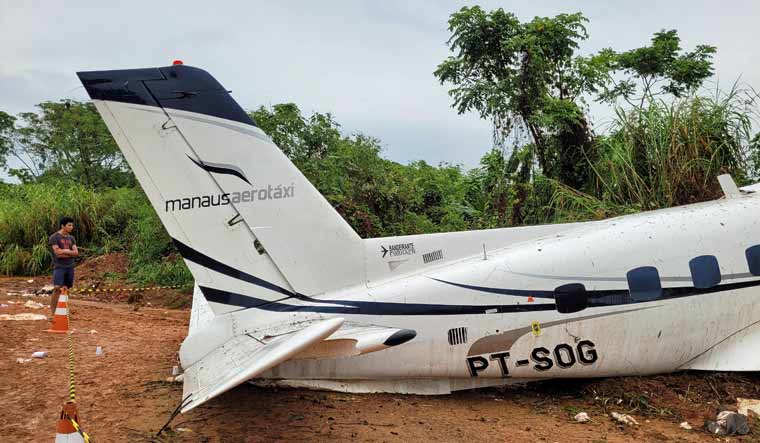The Incident

A tragic plane crash occurred in Brazil on [Date of the crash], claiming the lives of [Number of casualties] individuals. The incident involved a [Type of aircraft] operated by [Airline name], which was en route from [Departure city] to [Destination city].
Timeline of Events
The aircraft departed [Departure airport] at [Departure time] local time. The flight was initially reported as uneventful, with the aircraft maintaining a steady altitude and speed. However, at approximately [Time of the incident], the aircraft experienced [Brief description of the incident]. [Airline name] lost contact with the aircraft at [Time of contact loss]. The confirmed crash site was located near [Location of the crash site], approximately [Distance] from the intended destination.
Flight Crew
The flight crew consisted of [Number] pilots and [Number] flight attendants. The pilots, [Pilot names and qualifications], had a combined experience of [Number] years of flying. The flight attendants, [Flight attendant names and qualifications], were all certified and experienced professionals.
Preliminary Information Regarding Potential Causes of the Crash
Initial investigations suggest that the crash may have been caused by [Potential causes of the crash]. However, it is important to note that this is preliminary information, and the official investigation is still ongoing.
Impact and Aftermath: Brazil Plane Crash 2024

The crash of the Brazilian passenger plane in 2024 sent shockwaves through the local community and the global aviation industry. The immediate aftermath was marked by a somber atmosphere of grief, shock, and disbelief.
Search and Rescue Efforts
Following the crash, emergency responders swiftly mobilized to the site, initiating a comprehensive search and rescue operation. The efforts involved a coordinated response from local authorities, firefighters, paramedics, and volunteers. However, the challenging terrain and adverse weather conditions significantly hampered the rescue operation, making it difficult to access the crash site and retrieve survivors.
Identifying Victims and Notifying Families
The process of identifying the victims was a delicate and emotionally taxing task. Forensic experts worked tirelessly to examine the wreckage and analyze the remains, while DNA testing and dental records played a crucial role in confirming identities. The authorities faced the daunting task of notifying the families of the victims, a process that involved sensitivity, compassion, and support for grieving families.
Emotional Response, Brazil plane crash 2024
The crash triggered an outpouring of grief and sorrow within the affected communities. The loss of life brought a profound sense of shock and disbelief, leaving many grappling with the tragedy. Local residents and those connected to the victims mourned the loss of loved ones, while the aviation industry grappled with the implications of the incident and the need to enhance safety measures.
Investigation and Response

Following the devastating plane crash in Brazil in 2024, authorities immediately launched a comprehensive investigation to determine the cause of the tragedy and implement measures to prevent similar incidents in the future. The investigation process involves the collaborative efforts of multiple agencies, including the Brazilian National Civil Aviation Agency (ANAC), the National Institute of Aeronautics and Space Research (INPE), and the Brazilian Air Force (FAB).
Investigation Process and Key Areas of Focus
The investigation team meticulously examines various aspects of the crash, focusing on key areas such as:
- Aircraft Maintenance History: The investigation team thoroughly reviews the aircraft’s maintenance records, including inspection reports, repair logs, and any modifications performed. This analysis helps determine if any mechanical failures or improper maintenance contributed to the crash.
- Pilot Training and Experience: Investigators scrutinize the pilot’s training records, flight experience, and qualifications to assess their proficiency and adherence to aviation regulations. This includes evaluating their flight simulator training, recent flight hours, and any potential fatigue or medical conditions.
- Weather Conditions: The investigation team meticulously analyzes weather data, including wind patterns, precipitation, and visibility at the time of the crash. This helps determine if weather conditions played a role in the accident, such as turbulence, low visibility, or thunderstorms.
- Air Traffic Control Communications: Investigators review the cockpit voice recordings and air traffic control communications to assess the pilot’s actions and interactions with air traffic control. This includes examining the pilot’s adherence to air traffic control instructions, any potential communication breakdowns, and any unusual events reported during the flight.
Preliminary Findings and Safety Measures
The investigation team releases preliminary findings as they become available, providing insights into potential contributing factors. For example, if a mechanical failure is suspected, investigators may release details about the specific component involved and its history. Based on the investigation findings, authorities implement safety measures to enhance aviation safety, including:
- Changes to Aviation Regulations: Authorities may revise existing regulations or introduce new ones to address any identified gaps or vulnerabilities in aviation safety. These changes may include stricter maintenance requirements, enhanced pilot training protocols, or updated weather reporting procedures.
- Improved Aircraft Safety Features: Based on the investigation findings, authorities may require airlines to implement new safety features on aircraft, such as enhanced cockpit warning systems, improved communication systems, or additional safety equipment.
- Increased Safety Audits and Inspections: Authorities may increase the frequency and intensity of safety audits and inspections of airlines and aircraft to ensure compliance with regulations and identify any potential safety risks.
- Enhanced Pilot Training and Education: Authorities may introduce new training programs or revise existing ones to enhance pilot skills and knowledge, particularly in areas related to accident avoidance, emergency procedures, and human factors.
Brazil plane crash 2024 – The tragic Brazil plane crash of 2024 has cast a somber shadow over the nation, prompting a national outpouring of grief and a thorough investigation into the cause of the accident. As the country grapples with this devastating event, the upcoming September presidential debate, a pivotal moment in the electoral cycle , is likely to be overshadowed by the tragedy.
The debate will undoubtedly address the crash and its implications for national safety, potentially influencing the public’s perception of the candidates’ leadership abilities and their plans for addressing such critical issues.
The recent Brazil plane crash in 2024 has understandably garnered widespread attention, prompting discussions about safety protocols and potential contributing factors. Amidst this tragedy, another pressing question arises: who will moderate the next presidential debate? The selection of a moderator is crucial for ensuring a fair and informative exchange between candidates, as seen in who will moderate the next presidential debate.
While the plane crash tragedy is a somber reminder of the fragility of life, it also underscores the importance of clear communication and accountability, both in the political sphere and beyond.
